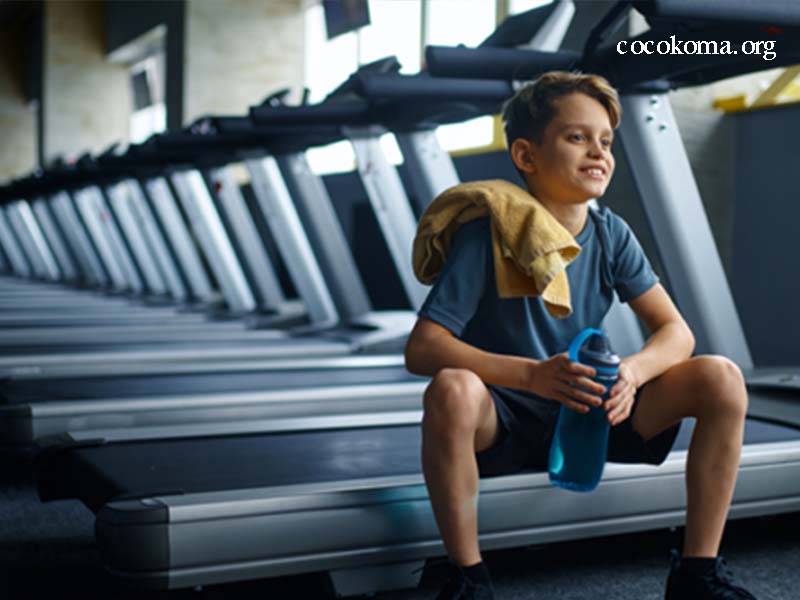Going to the gym is a common practice for people who want to improve their physical health, boost their confidence, or stay active. However, one frequently asked question is, “How old do you have to be to go to the gym?” Different fitness facilities have varying rules and regulations regarding the age requirements for gym-goers. In this article, we’ll explore age restrictions at gyms, the benefits of starting gym workouts at a young age, potential risks, and tips for parents and guardians who want their children to exercise safely. This comprehensive guide will provide clarity on everything you need to know about age limits for gym access and offer essential tips for younger individuals who are eager to hit the gym.
Understanding Gym Age Restrictions
Gym age restrictions can vary depending on the type of fitness facility and local laws. Generally, gyms tend to have a minimum age requirement to ensure safety and proper supervision. The following sections will cover different age categories and their respective gym access options.
Gyms with Age Restrictions for Minors
In most gyms, age restrictions typically start at around 13 to 16 years old. While some gyms allow younger teens (ages 13 to 15) to access the facilities with parental consent or adult supervision, others have stricter policies, requiring individuals to be at least 16 years old.
Some gyms even offer specialized youth membership programs tailored to younger audiences, allowing minors to participate in specific fitness classes, group exercises, or limited gym access under the supervision of a certified trainer. These programs focus on teaching kids and teens how to exercise safely and effectively without putting undue strain on their developing bodies.
Age Requirements for Independent Gym Access
Many gyms require individuals to be at least 16 or 18 years old to use gym facilities without adult supervision. This threshold is often set to ensure that users can exercise responsibly, follow safety protocols, and utilize the equipment properly. Once a gym-goer reaches the age of 16 or 18, they are typically allowed full, independent access to all areas of the gym, including weight rooms, cardio equipment, and group fitness classes.
Factors Influencing Gym Age Policies
Several factors contribute to the establishment of age restrictions in gyms, including legal considerations, safety concerns, and the physical and emotional development of younger individuals.
Legal Considerations
Different countries and regions have specific laws regarding the age at which a minor can engage in physical activities in a public setting, such as a gym. In many places, gym operators must adhere to regulations to ensure that young individuals exercise in a safe and controlled environment. Parental consent forms are often required for minors, ensuring that gym owners are not liable for accidents or injuries sustained by younger members.
Safety Concerns
One of the primary reasons for age restrictions is safety. Gym equipment, such as treadmills, weight machines, and free weights, can pose a risk to younger individuals who are not fully developed physically or who lack experience. Younger users might not have the strength, balance, or coordination needed to use certain equipment correctly, increasing the likelihood of injury. Gym management teams aim to minimize risks by enforcing age restrictions and requiring parental supervision for younger members.
Physical Development of Teens
The physical development of teenagers varies significantly, and age restrictions are often imposed to protect the musculoskeletal health of young gym-goers. Resistance training can be beneficial for adolescents when done correctly, but excessive or improper weightlifting can harm growing bones, joints, and muscles. Most gyms prefer to restrict younger teens from performing heavy lifts until they reach a stage of physical maturity where their bodies can handle the strain safely.
Benefits of Exercising at a Young Age
Although gyms impose age restrictions for safety reasons, there are numerous benefits to introducing children and teenagers to fitness routines early on. Encouraging physical activity at a young age promotes a healthy lifestyle that can continue into adulthood.
Developing Healthy Habits
Starting gym workouts or fitness routines during childhood or adolescence sets a foundation for a lifetime of healthy habits. Regular exercise helps to prevent obesity, improves cardiovascular health, and boosts mental well-being. It also promotes discipline and a sense of responsibility, which are essential traits for young individuals to develop early in life.
Building Confidence and Self-Esteem
Exercise plays a crucial role in enhancing self-confidence, especially for teens who are often navigating physical changes during puberty. By participating in gym workouts or structured exercise programs, younger individuals can build strength, improve their appearance, and feel more confident in their abilities.
Enhancing Physical Development
Engaging in regular physical activity can enhance a young person’s physical development. Strength training, bodyweight exercises, and cardiovascular workouts can improve coordination, balance, and muscle tone. These benefits can extend beyond the gym and improve performance in sports, academics, and other extracurricular activities.
Potential Risks of Gym Workouts for Younger Teens
While exercise is beneficial for all age groups, it’s important to acknowledge the potential risks associated with younger teens working out at a gym. Parents, guardians, and trainers must ensure that younger gym-goers are educated on proper form, technique, and safety measures.
Risk of Injury
The most significant risk of allowing young teens to use gym equipment is injury. Incorrect form, improper use of equipment, and overexertion can lead to injuries such as sprains, strains, and fractures. These risks are higher for younger individuals who are still developing physically.
Psychological Pressure
Another risk is the psychological pressure that some teens may feel in a gym environment. Being surrounded by older, more experienced gym-goers can create a sense of competition or inadequacy for some younger individuals. This pressure could lead them to push themselves too hard, which increases the risk of injury or burnout.
Tips for Safe Gym Workouts for Young Teens
For young teens who are eager to go to the gym, it’s essential to take certain precautions to ensure their workouts are both safe and effective. Here are some tips for parents and guardians to help their children navigate the gym safely.
Consult with a Doctor
Before allowing a young teen to begin a gym routine, it’s crucial to consult with a healthcare professional. A doctor can assess the teen’s physical health and development to ensure that they are ready to engage in specific types of exercise.
Start with Bodyweight Exercises
Bodyweight exercises, such as push-ups, squats, lunges, and planks, are excellent starting points for younger teens. These exercises build strength and endurance without placing too much strain on developing bones and muscles. They also help young individuals develop proper form and technique before advancing to weightlifting or machine-based exercises.
Emphasize Proper Form and Technique
One of the key aspects of a safe gym workout is proper form. It’s important for younger gym-goers to learn how to perform exercises with the correct technique to prevent injuries. Parents can hire a personal trainer or enroll their teen in youth fitness classes to ensure they receive guidance on safe exercise practices.
Limit Weightlifting
While strength training is beneficial for teens, it’s essential to limit the amount of weightlifting they do. Teens should avoid heavy lifting and focus instead on light weights with high repetitions to build muscular endurance without placing excessive stress on their bodies. Gradually increasing weights under the supervision of a trainer or coach is a safer approach to strength training for teens.
Rest and Recovery
Younger teens must also understand the importance of rest and recovery. Overtraining can lead to injuries, exhaustion, and burnout. It’s important for young gym-goers to schedule rest days and ensure they are getting enough sleep to support their physical development.
Parental Involvement in Gym Workouts
Parents play a crucial role in guiding their children toward safe and effective gym workouts. It’s essential for parents to be actively involved in their children’s fitness journey, providing encouragement and ensuring that their kids are following proper safety protocols.
Encouragement and Support
Parents should encourage their children to adopt a positive attitude toward fitness and exercise. By emphasizing the importance of staying active and healthy, parents can help their children develop a lifelong love for physical activity.
Monitor Progress
It’s also essential for parents to monitor their child’s progress and ensure that they are exercising safely. Parents can track their teen’s workouts, ask questions about their gym sessions, and intervene if they notice any signs of overexertion or injury.
Conclusion
The Ideal Age to Go to the Gym
In conclusion, the ideal age to start going to the gym varies depending on the gym’s policies, the individual’s physical development, and the level of supervision provided. While many gyms allow younger teens to access the gym with parental consent or supervision, it’s generally recommended that individuals wait until they are at least 16 years old to begin independent gym workouts.
Parents and guardians should play an active role in guiding their children through safe and effective exercise routines. With proper supervision, a focus on safety, and an emphasis on building healthy habits, young teens can benefit immensely from starting their fitness journey early in life.








